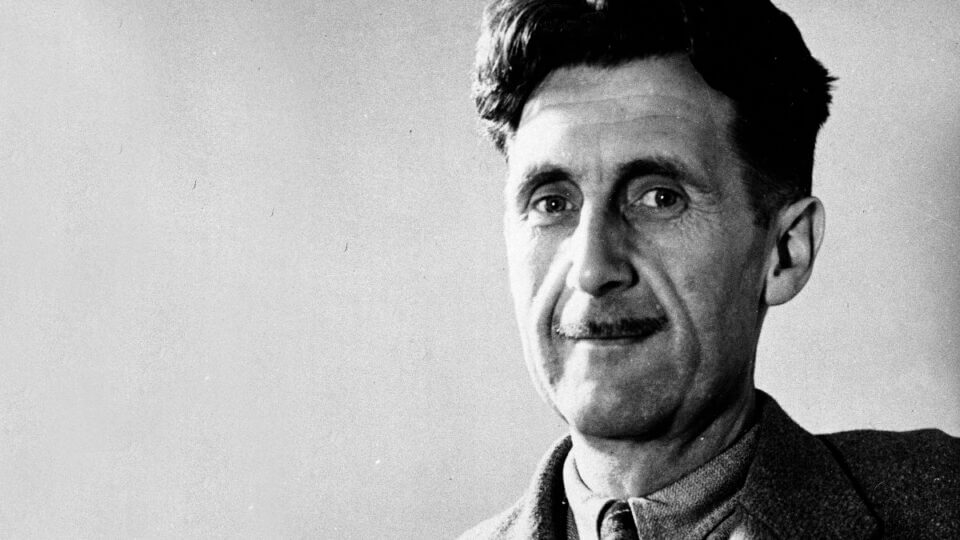
“All the while, the existing social safety net—combined with various anti-poverty programs—in the United States already provides for our nation’s poor by offering them an adequate standard of living.”
Introduction
My most recent Merion West essay “Conservatives Are Not the Only Ones Who Ignore ‘Facts and the Science,’” which was published in May, contained a lengthy section on the heritability of many complex human behavioral traits including industriousness, intelligence quotient (IQ), honesty, creativity, courage, etc. As this essay explained, recent scientific findings over the past 20 or so years have conclusively established that the heritability of these traits cannot be discounted. This, however, appears to be in tension with a long-standing Zeitgeist on the political right: that under the American ideal, which has persisted largely unchanged since the nation’s founding, all men and women are equal in the eyes of God; each person possesses inherent dignity; all must receive equal treatment under the law; and, most importantly, every individual is due an equal opportunity to succeed.
Today, conservatives still tend to reject the equal outcomes goal of the Left; however, a problem persists: How should capitalism, the preferred economic system of nearly all conservatives, account for the inherent unfairness of the genetic lottery? How can an individual with an immutable IQ of 80 possibly compete in an economic marathon with a person who possesses an IQ of 120? This conundrum demands that conservatives address this serious moral issue.
Capitalism and Inequality
In another Merion West essay, published prior to the aforementioned one in May, I argued that both income and wealth inequality have not been increasing in the United States, despite frequent claims to the contrary by many left-of-center commentators. However, the worldwide statistics on this point are truly compelling. Personally, my first encounter with the question of rising vs. falling inequality was during my college days in the 1960’s when I was exposed to the seminal research of Simon Kuznets. In his groundbreaking 1955 paper “Economic Growth & Income Inequality,” Kuznets offered that “The central theme of this paper is the character and causes of long term changes in the personal distribution of income.” Does inequality in the distribution of income increase or decrease in the course of a country’s economic growth? After a careful review of the scant data (Kuznets had the statistics for only three counties—Great Britain, Germany, and the United States), he found that “The general conclusion suggested is that the relative distribution of income…has been moving toward equality.”
During the 1980’s and 1990’s, I first became aware of the data that was being collected for Julian Simon’s 1983 book The Ultimate Resource. The book—when ultimately published—was chock full of data, graphs, and statistics, and they all showed how strikingly fast things were improving on this metric.(1) And, after Simon’s death Stephen Moore published a book in 2000 entitled It’s Getting Better All the Time: 100 Greatest Trends of the Last 100 Years: 100 Greatest Trends of the 20th Century, which condensed and popularized Simon’s 700-page tome into a reader-friendly 300 pages. Moore’s book found that there has been more material progress in the United States in the 20th century than in the entire world in all previous centuries combined. And, in 2003, Moore was joined by Gregg Easterbrook and his book The Progress Paradox: How Life Gets Better While People Feel Worse. Easterbrook’s optimism was offset by the fact that over the prior 50 years, surveys of Americans showed that they had not grown happier. Perhaps, however, everyone had forgotten President Franklin Delano Roosevelt’s 1945 statement that “The great fact to remember is that the trend of civilization itself is forever upward.”
A smashing blow was struck against the pessimists the very next year by Robert William Fogel, the 1993 Nobel Laureate in Economics, of the University of Chicago, with his short book The Escape From Hunger and Premature Death, 1700-2100: Europe, America, and the Third World. Fogel reported that his research had found a “Remarkable reduction in inequality during the 20th century.” During those ten decades, “In every measure that we have bearing on the standard of living, such as real income, homelessness, life expectancy, and height, the gains of the lower classes have been far greater than those experienced by the population as a whole, whose overall standard of living has also improved.”
Three years later, Gregory Clark published his very influential, and controversial book A Farewell to Alms: A Brief Economic History of the World. According to Clark’s research, the basic outline of world economic history is surprisingly simple, as the graph below suggests. If one examines Clark’s graph, he will see that the average person in the world of 1800 was no better off than the average person of 1,000 B.C.

Is There a Solution to Inequality that Springs Solely from the Genetic Lottery?
This essay has demonstrated that while capitalism is making things much better for everyone, especially the lower classes, capitalism cannot transform someone who is born permanently less intellectually gifted into someone who is bright. So how does our society go about leveling this existing playing field? We do this by ensuring that everyone possesses a “decent” standard of living. (2) How does our society accomplish this? The answer is progressive (but not confiscatory) taxation, which we already have, combined with cash benefits and free in-kind services such as health, housing, food assistance, etc, all of which are also already in place. So our conundrum boils down to: Are our nation’s existing welfare programs adequate or should we add new or greater benefits?
Poverty in the United States
The United States’ poverty rate (as measured by only cash income) was already in a long-term downward trend (from 80% in 1900), and this took place as people left their farms and moved to cities for higher-wage jobs in manufacturing. This fact did not stop Michael Harrington, a well-known socialist who succeeded Eugene Debs (and then Norman Thomas) as the leader of the tiny American Socialist Party, from writing his 1962 book The Other America. According to Harrington, the number of poor Americans in 1962 totaled 40 million souls, and rumor has it that Harrington’s book caused President John F. Kennedy to commence planning a “War on Poverty;” however, after his assassination in 1963, this anti-poverty program was actually undertaken by President Lyndon Johnson. (The truth is that this war was only a skirmish since President Johnson only allocated less than one billion dollars to this battle during its first year of operation.)
Despite this almost trivial funding by the federal government, the United States’ poverty rate (as measured by income) continued its natural decline until about 1975 when it leveled off at roughly 12%. And it remains in the 10-15% range today. This converts to approximately 30 million Americans in need. The big problem is that the “income” of an impoverished person fails to account for the value of many non-cash sources of free services, such as the Earned Income Tax Credit, the Child Tax Credit, Medicaid, Section 8 Housing vouchers, Low Income Home Energy Assistance, SNAP, etc. In 1993, Daniel Slesnick published a paper entitled “Gaining Ground: Poverty in the Postwar United States,” which measured the value of what a needy family “consumed” (See graph below). Slesnick demonstrated that the level of poverty in the United States had continued to fall after 1975, reaching far less than 5% today. (As an aside, the Office of Management and Budget (OMB) has recently requested ideas from the public about better ways to measure poverty.) The bottom line is that capitalism has fought the war against poverty, and it has won.

Remaining Questions
Is our nation’s current level of support adequate to ensure that every American citizen can enjoy a decent standard of living? Today, all levels of government (federal, state, and local) spend over a trillion dollars annually in an effort to alleviate poverty. This is about 6% of the federal budget, and it is more than the federal government spends on defense. (Only Social Security and Medicare command a larger share of the budget.) In the time since 1965, Americans have spent approximately $27.8 trillion of government funds on the needy, and this does not count private charity. (In 2018, Americans gave almost $428 billion to private charities.)
Are these existing government programs efficient? In 2015, the total “poverty gap” was estimated to be about $77 billion for needy families with children; however, total government spending for poor families with children was just under $450 billion. This is almost six times the funding necessary to alleviate the actual amount of poverty. This is likely accounted for by the staggering amount of wasted overhead and administrative expenses.
In 2015, what was the total income (both direct and indirect) for a mother with two children who worked a minimum wage job that paid her just under $14,000 per year after taxes? If this woman availed herself of all the government poverty programs—sadly, many do not take advantage of such programs because they often do not know that they exist—she would have received cash and services worth approximately $47,000 per year.
The United States Census Bureau—using only cash income—reports every year that there are 30 million poor people in America. What does the Census Bureau report regarding the living standards of these needy persons? In 2017, the government reported that the average poor person in America lives in an air-conditioned and heated house or apartment that is in good repair and is not overcrowded. The average recipient household owns a car, and 43% own two vehicles. Their home has at least one widescreen television with cable, a computer (or a tablet) with Internet, and a smartphone, with 82% having more than one smartphone. They report that they never go hungry and that they get all necessary medical care and prescriptions.
When examining the United States’ poor as opposed to the rest of the world’s, what have investigators found? In 2010, the world-renowned expert on inequality Branko Milanovic wrote in his book The Haves and the Have Nots that the poorest 10% in the United States are better off than the top 10% in India. Moreover, in April 2019, James D. Agresti reported at The Foundation for Economic Education that “The Poorest 20% of Americans are richer on average than most European Nations.” In Agresti’s words, “The privilege of living in the US affords poor people more material resources than the averages for most of the world’s richest nations.”
Is there serious poverty elsewhere in the world? Of course, poverty stricken families and individuals occupy all corners of the globe, but poverty is most highly concentrated in sub-Saharan Africa. Africa remains behind—as I pointed out in my first Merion West article—largely because of various socialist policies that have been implemented there. As I noted:
“During the 1960’s, much of sub-Saharan Africa chose socialism, and each of these nations then entered a period of rising poverty. A single set of statistics tells much of the story regarding collectivism in sub-Saharan Africa. When the British and the other colonizers left Africa the poverty rate stood at 11%. By 1998, under the new indigenous socialist governments, this figure had skyrocketed to 66%, and now as many of these nations have begun to re-introduce market based reforms, this percentage has fallen to 20%. Still way to high but currently moving in the right direction.”
Conclusion
This essay has shown conclusively that socialism has been a blind canyon that only makes everyone equally poor, unfree, and miserable. It also demonstrated that capitalism has been the world’s secret elixir for remedying economic woes. Next, remaining inequalities—with the exception of in certain nations that have chosen socialism—are attributable to the genetic lottery. All the while, the existing social safety net—combined with various anti-poverty programs—in the United States already provides for our nation’s poor by offering them an adequate standard of living. Instead of indulging in the Left’s baseless, fact-free claim that it wishes to assist those who have been left behind, the solution is to improve the efficiency and usage of our nation’s expansive and already extant anti-poverty programs.
Richard W. Burcik is a retired economist and attorney.
Footnotes
- In 1998, Simon updated all of his facts and trends in The Ultimate Resource.
- I define decent so as that every poor person (as how poverty is measured in the future is now being revisited by the OMB)—and, in particular, children—should receive minimally acceptable levels of food, clothing, housing, medical care, and education.”












Where can I find real ideas about capitalism? We need to get down this kind of articles.